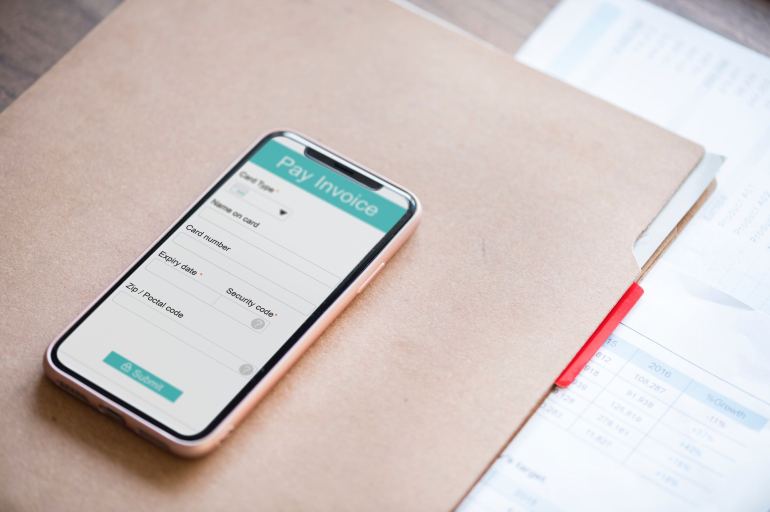From Time Tracking Apps to Marketing — Where and Why Freelancers Should Invest

When I used to work as a marketing consultant for a digital marketing company, I would talk to dozens of freelancers and SMEs every week. The main reason I heard constantly for not buying services was: “I just don’t have the money right now, I’m just starting out/short on funds.”
Often, they would promise to ring me back the moment they had a few sales, or had found that investor, or the moment high season began.
You won’t be shocked when I tell you that call rarely came, and I didn’t wait for it.
Does that sound familiar? If you’re just starting out as a freelancer, every cent you make is to put food on your table — so investing it back in yourself and your new business might be the furthest thing from your mind. The key thing is, it’s just that — an investment.
Take timekeeping software for your Mac, for instance. You could just use a clock, but you won’t get the same benefits of knowing where your time has gone. When money is so limited, though, you have to be extremely careful about just how you invest it… and just using a clock seems more appealing, but could cost you money in the long run. Whether it’s thousands of dollars on paid advertising, or fifty dollars on a time tracking app, the decision about where to put your money for the best return on investment is never an easy one.
With years of experience of marketing, tools and apps, we’re here to break down what you should invest in, why, and when’s the right time to do so.

Essential Tools for Starting as a Freelancer
A common rookie mistake when you start out freelancing is to set your hourly rate too low. At your old company, you might have been earning $20 an hour — so you have in mind that’s a good baseline.
The reality, though, is that the clients weren’t paying $20 an hour to your bosses. Your company was paying for software, admin staff, management salaries, health insurance, etc..
Now that you’re funding these out of your own pocket, your profit margins drop off a cliff. Just take a look at this article, which does the math on what freelancers really earn.
Be sensible with the tools you commit to, but make sure that your hourly rate—or monthly retainer—factors in the money you’re investing back into your business.
Organization Software and Apps
Tools which will help keep you structured are important to invest in early on.
Why? You’re just starting out, so there might be the temptation to either work all hours of the day and night and burn out, or to spend too much time catching up with that new Netflix series. Neither of those establish healthy work habits that will carry you to freelance success.
Important organization apps are a time tracking app, or work time tracker, like Timing. You’ll be able to work out from the start where you’re losing time, and make sure that you’re dedicating enough time to each of your new projects — looking for clients, building a website, reading personal development materials — these are all important things to schedule into your day.
Another good app to invest in early on, aside from timekeeping software for your Mac, is somewhere to keep all your ideas and projects you’re working on.
ToDoist, Trello and Asana are good options if you work with team members, while apps like OmniFocus and Microsoft To-Do are good for keeping your own ideas and scheduling tasks. Most offer a free version, so there’s no reason not to try before you buy.
Initial Outlay: free to around $50.
When to invest: ASAP.

Bookkeeping and Invoicing Apps
We could write a whole article about bookkeeping tools… wait, scratch that, we have written a whole article about bookkeeping tools for Mac! When you’re starting out as a freelancer, the taxes question is bound to pop up at some stage, and life will be a lot easier if you have everything in order.
One of the first questions to ask yourself when looking at bookkeeping tools is: how ambitious are you?
If you plan on staying as a freelancer with a relatively small client list, then something simple like Wave, Sage One or FreshBooks.
If you plan on growing, investing in a tool with room to scale like Xero is a good idea. It’s worth deciding now, because migrating across simply isn’t worth the headache if you can avoid it.
Xero comes with an invoicing tool, but if you’re going for a budget bookkeeping tool without it, then some time tracking apps offer invoice tools too, and there’s always Invoicely, an invoicing service for small businesses. Or, if you’d like to just generate a quick invoice without having to sign up for an account, Indy’s invoicing service for small businesses could be a great choice.
A common complaint of freelancers is clients refusing to pay them for services rendered, and an invoice that looks professional and is clearly dated and recorded as sent can offer you some protection against flaky clients. Remember to also draw up some form of written agreement, so that if you do ever need to go to court, you’re full protected.
Initial Outlay: free to around $50.
When to invest: as soon as you have paying clients, but if money is tight choose free versions and scale up later.

Industry Specific Tools to Invest In
Part of striking out on your own is investing in the best tools for the job. If you’re a writer or coder, then you might not need many monthly subscriptions in order to do your best work. But if you’re a freelance SEO consultant, however, you’ll find it harder to keep your subscriptions to services minimal.
Bloggers will also struggle, as it seems that everything that used to be free now comes with a monthly cost. If you run social media accounts, invest in a scheduling app like Buffer.
If you’re an SEO expert, you’ll know the expense of keyword tools like Ahrefs and Semrush, which are worth it for the detailed research they allow you to do. These tools don’t come cheap, but they are important if you want to provide a competitive service.
If you build your own website, which you should, you’ll find that this too costs an annual fee for a host and any paid plugins. These expenses have to come out of the earnings from your business, so make sure you price for them in your fees.
Initial Outlay: Starting at $10 a month for social media schedulers, to $100’s a month for SEO tools.
When to invest: Invest in a professional website from day one, but make sure you scale tools appropriately. If there’s a month when you don’t have clients requiring a certain tool, don’t forget to downgrade your subscription.

When is the Right Time to Hire, Outsource and Invest in Marketing?
In his epic post on Noah Kagan’s site about time management, Taylor Pearson talks about how he tracked his day down to the nth detail, and then worked out from there what he should be outsourcing.
His main rule for this: what is low value work that you could easily outsource, so that you have more free time to make far more money, or to go out and get some fresh air?
Or, what’s your weakness that you have no interest in, but you know you need? Maybe it’s project management, or SEO, or content writing.
Rather than forcing yourself to learn something you don’t have a passion for, focus your skills on what you’re good at, then outsource the rest. If you still don’t have a time tracking app installed, then get one and start working out what in your day can be cut.
What About Marketing?
If you’re a small freelancer or writer, then this won’t be as pressing a question on your mind. However, if you’re an SME, launching a product, a SaaS, or someone in a high value industry like a designer, then marketing is something you need to look into.
A good rule of thumb is that you should be spending around 10% of your yearly income on marketing, but this only works when you have a well-established business with at least a six figure turnover. If you’re starting out and earning $600 a month… expect to have a marketer laugh in your face if you ask what will they do for $60 a month.
Depending on whether your immediate goal is to build consistent, long term traffic and sales, or if you’re more concerned with an initial sales boost, then you’ll want to choose between content marketing, PR and SEO, or paid advertising.
Ideally, you’d go for everything, but this requires more budget than you’re likely to have — especially as there’s going to be a lead time on getting results from any sort of marketing.
If you have a high client value then paid advertising, like Google Ads for SaaS, is a good choice as it can give your income an immediate boost after some trials and keyword optimization.
If you have lower-value clients, you’ll need to build up traffic and interest to get a sustained and steady stream of clients.
Initial Outlay: Usually a commitment of $500 to $5000+ a month, depending on what you’re marketing and how.
When to invest: As soon as you have a business you want to scale. Small business loans are often a good way to fund the first few months, until you’re seeing results. Many marketing companies will recommend not investing unless you have the budget to pay for 3-6 months of work, which allows for enough time to see an ROI. Before making that financial commitment, it’s worth trying out apps and other free tools like Keeper’s business financing calculator to understand what loans would work best for your business. It’s crucial to do the numbers right from the very beginning. With more considerable expenses, though, often you have to commit and remind yourself that this is an investment, not an expense.
Making a financial commitment early on in your career as a freelancer will keep you both accountable and motivated, as well as help you feel professional. If you know that you’ve invested in yourself, it will help you have more confidence when approaching clients — as well as allowing you to provide a better service for them.
As most apps offer a free trial, it’s worth trying out a few to find what works best for you and your business, before commiting. With larger expenses, though, often you have to commit and remind yourself that this is an investment, not an expense.
Has Timing helped you get more productive? We want to hear about it! Contact us to be a case study. Want to be more productive and accountable for your time? Download the free trial today.
